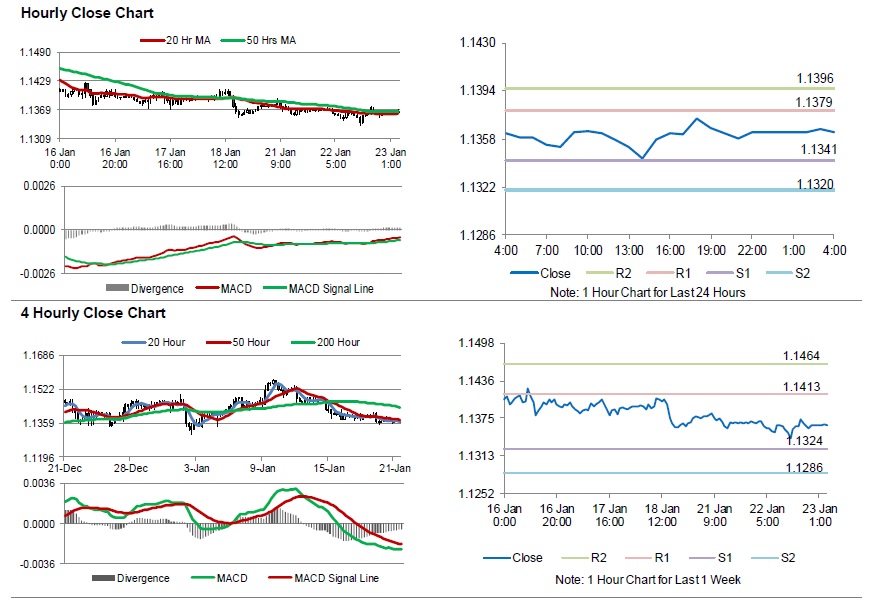For the 24 hours to 23:00 GMT, the EUR declined 0.06% against the USD and closed at 1.1363.
Data revealed that the Euro-zone’s ZEW economic sentiment index rose to a level of -20.9 in January, compared to a level of -21.0 in the prior month.
Separately, in Germany, the ZEW economic sentiment index unexpectedly advanced to a 4-month high level of -15.0 in January, compared to a reading of -17.5 in the previous month. Market participants had expected the index to drop to a level of -18.5. On the other hand, the nation’s ZEW current situation index dropped sharply to 27.6 in January, marking its lowest level since January 2015 and more than market expectations for a fall to a level of 43.3. In the preceding month, the index had recorded a level of 45.3.
In the US, data showed that the US existing home sales declined to a 3-year low level of 6.4% to an annual rate of 4.99 million in December, suggesting a further slowdown in the housing market.. Existing home sales had recorded a revised reading of 5.33 million in the previous month. Market participants had expected existing home sales to drop to a level of 5.24 million.
In the Asian session, at GMT0400, the pair is trading at 1.1363, with the EUR trading flat against the USD from yesterday’s close.
The pair is expected to find support at 1.1341, and a fall through could take it to the next support level of 1.1320. The pair is expected to find its first resistance at 1.1379, and a rise through could take it to the next resistance level of 1.1396.
Looking forward, investors would closely monitor the Euro-zone’s consumer confidence index for January, slated to release later in the day. Later in the day, the US house price index for November and the Richmond Fed manufacturing index for January along with the MBA mortgage applications, will keep traders on their toes.
The currency pair is showing convergence with its 20 Hr and 50 Hr moving averages.

